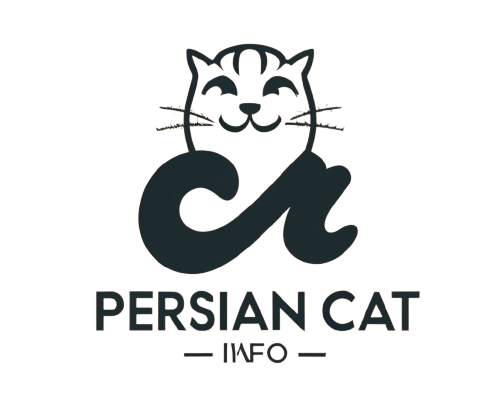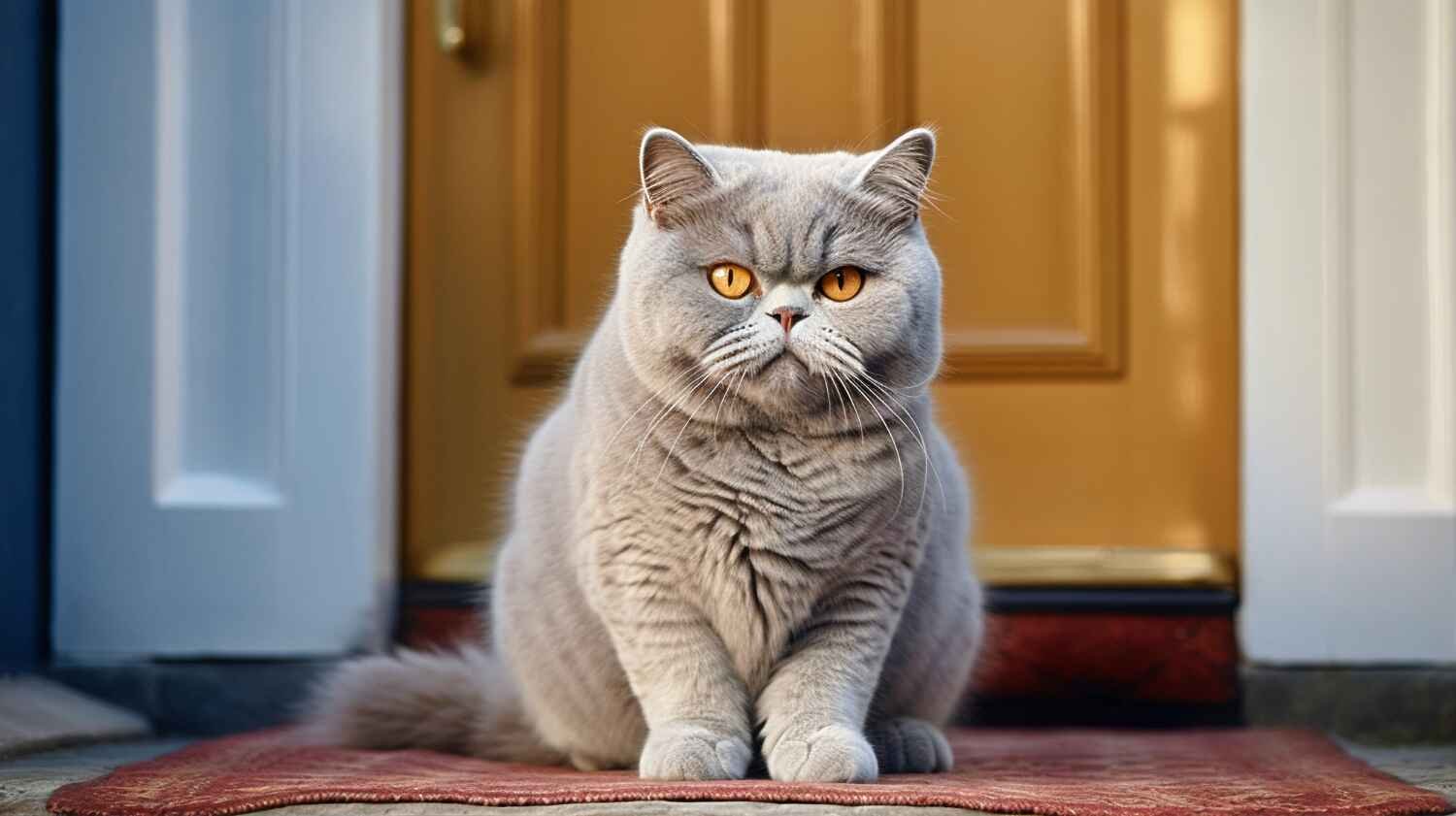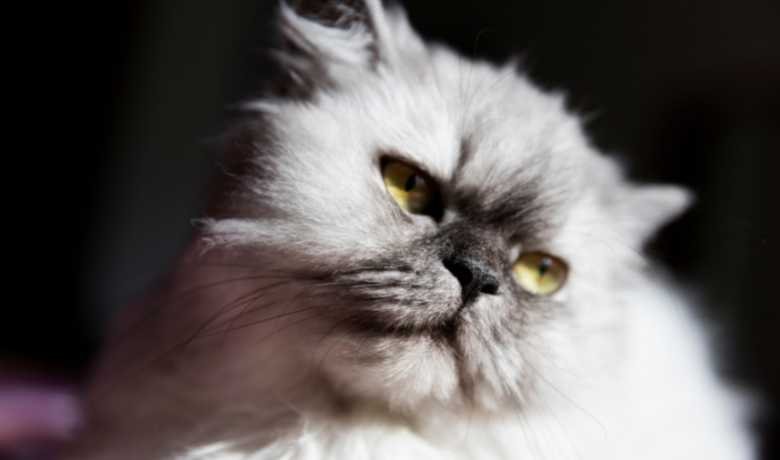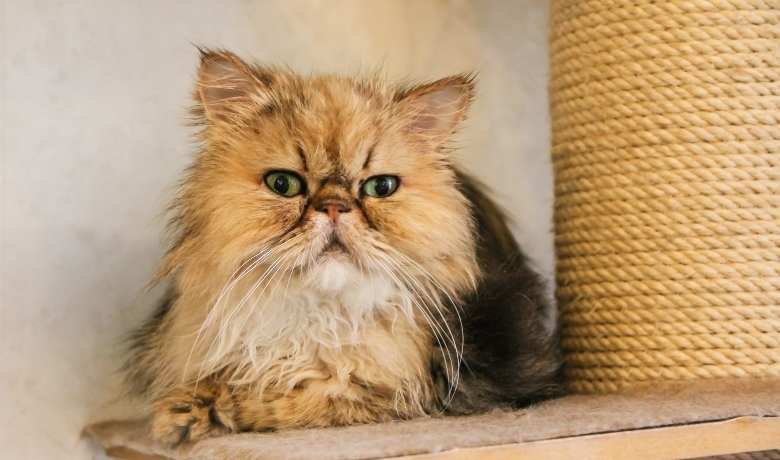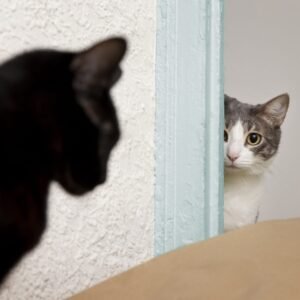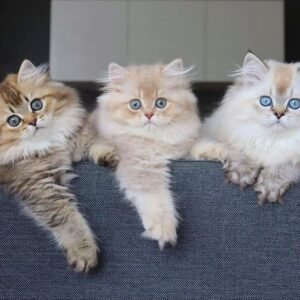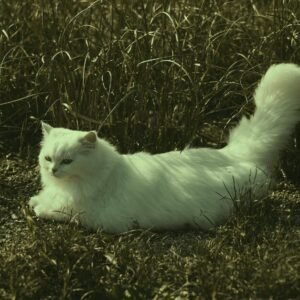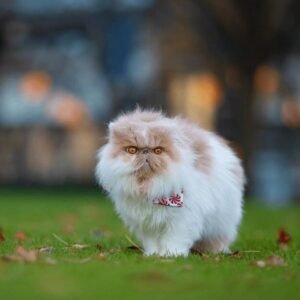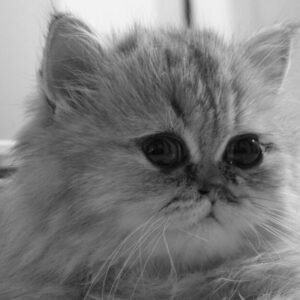Persian cats are the most popular breed due to their pattern and color. A Persian cat represents approximately 40% of all pedigreed cat registrations according to the Cat Fanciers’ Association (CFA).
Although it varies depending on the time of year, approximately one-half of all cats at a cat show are Persians.
The most common Persian cat colors are white, black, blue, grey, orange, silver, red golden, lilac, cream, and brown. One of the most common patterns of cats is the tabby pattern,. Additionally, you can find cats with solid colors, tortoiseshell, calico, and bi-colored patterns as well.
As an owner of these cats, I have a lot of knowledge about cat colors and patterns. So, don’t worry about your cat’s color and pattern after reading this article you will understand what type of your cat is.
Seven groups of Persian cats based on their colors and patterns:
- Solid color division
- White
- Black
- Blue
- Grey
- Orange
- Cream
- Chinchilla
- Persian tabby
- Calico
- Tortoiseshell
It is important to note that each of these groups or divisions competes only against itself as if it were a separate breed. For example, there is no award for the best Persian, only for the best solid color Persian, or the best tabby Persian, etc.
Solid color division
These cats have a solid color fur with no stripes or markings. The most common solid colors are black, white, and calico (a mix of three different colors).
White Persian cat

White Persian cats are the most common and famous colors of the Persians. The glistening-white Persian has always been one of the most prized. The colors of these cats differ in many ways because the color of the cat depends on the genes.
There are a variety of colors that can be found on them, including a creamy white and a pale yellow. Their noses, ears, and tails all have black points on them.
All the kittens are born with blue eyes but change their eye color as they grow up. Their eyes can be any color but are usually green or blue. Blue-eyed whites are less common. Blue-eyed variation occurs when a white cat carries the gene for white spotting. In the rear cases, there is a color difference between both eyes called odd-eyed
The white Persian cat is a result of a recessive gene which results in a lack of pigment in the cat’s fur. This gene can be passed down from either the mother or father. It is estimated that there is a 25% chance that a child will be born white if both parents have the gene.
No major cat groups recognize the white Persian cat, but still, they are famous among breeders and pet owners. these cats are famous for their soft fluffy hair and gentle behaviour.
Black Persian cat

Black Persian cats are also well-known as whites. The fur is a deep, solid black, and the eyes are usually a deep, rich orange or copper. tails are most commonly black and there is a slight difference in the color of ears.
Black cats are considered highly desirable because of their graceful looks and less required black cats have high demand. They require minimal grooming and are generally healthy animals. The fact is that in some countries black cats are also considered a good luck to see more fact visit
Black Persians have no prominent pattern because of solid and the most recognizable color black cats have no pattern on their coat but sometimes white spots on their chest and paws.
The black Persian coat is the result of a gene called the “melanistic” gene. This gene causes an increase in the production of melanin, the pigment that gives hair its color. In most animals, this gene is recessive, meaning that it must be inherited from both parents in order to be expressed.
Blue Persian cat

Blue Persian cats are well known for their long fluffy hair and blue fur. Their upper structure consists of blue color and their abdominal, and chest part consists of gray and white.
The Blue Persian cat’s origin is uncertain, however, it is assumed to be a hybrid between a British Shorthair and a Persian. They were originally shown in the United States in 1902 and gained popularity in the 1920s and 1930s. They are still one of the most popular cat breeds in the world today.
Are blue Persian cats friendly? Blue Persians are typically gentle and affectionate cats that enjoy being around people. They make great companions for families with children and other pets.
Blue cats act as wonderful additions to the home: If you’re looking for a beautiful and regal cat, the Blue Smoke Persian cat is a perfect choice. With their stunning blue fur and friendly dispositions, they make wonderful additions to any home.
Grey Persian cat

There are different types of grey cats depending on their color. Grey Persian cat fur is a combination of two colors. these cats are a light-coloured mixture of black and white that make distinctive features.
They also typically have light-colored eyes, tails, and ears, as well as any common markings and patterns.
Gray cats had the highest score for being shy, aloof, and intolerant. Grey cats like cuddles and the friendly behavior of their owners. So if you are committing grey cats then must be friendly with them.
Smoke blue Persian cat: Smoke Persians have dark gray fur with lighter highlights, giving them a “smoky” appearance. They may also have dark eyes, tails, and ears, as well as any common markings and patterns.
Both the silver tabby and smoke Persians are recognized by the Cat Fanciers Association (CFA), the world’s largest registry of pedigree cats.
Orange Persian cat

One of the most beautiful cats with fluffy hair is an orange Persian cat. They have a white undercoat, which makes their fur look even more lustrous, and their eyes can be any color from green to blue.
The comic strip centers on Garfield portrayed as a lazy, fat, and cynical orange tabby Persian cat. Our lovely orange-hued Persians come in soft shades, from golden orange to creamsicle orange colors. Then, there are bold oranges, like tabbies.
Orange-coated cats have a reputation for being extra lovable. Persian kitties are already pretty loveable creatures, but the color orange is one of the top coat colors for affectionate tendencies Orange coats contribute to highly affectionate natures.
Orange coloration in cats: In cats, the colors of a cat are the result of genes. The orange cat is the result of an orange gene. This gene produces an enzyme that converts black pigment into orange pigment, so an orange Persian will have black fur but will still have orange hair shafts.
White markings on their face: Orange cats have white markings on their chest and paws, and their tails are usually tipped in black. Their ears are also black, with a white patch on the inside.
Cream Persian cat

With a buff cream-colored coat, the shade is the same across the body without any markings. Lighter shades of cream are preferred for showing classes. A cream Persian cat will have pink paw pads and nose leather.
Cream cat clothed all over in the color of the points, and the result can be a rich, warm, chocolate-brown cat with copper eyes. Cream Persian cats have no color combination in their fur.
Cream cat when differs in gene make another color such as:
Lilac: Lilac Persians arise from the Himalayan color spectrum. The color should be a rich, warm lavender with a pinkish tone.
Chocolate: When the recessive genes are more in amount causes a brownish color of the fur of a cat.
Chinchilla persian cat

The Chinchilla is really a specific type of Persian with a white coat tipped with black, and green eyes. It has the same ultra-thick undercoat and long coat which needs a great deal of attention to keep it from knotting up.
These cats are a unique breed that is different from other cats. Chinchillas are unique due to their color, pattern, and cost of it.
Nature of Chinchilla cat: Chinchillas have a very quiet and gentle nature and they make great pets for a wide variety of people. They don’t tolerate small children very well. These cats love to form close relationships with their owners and they become very attached to them. They love lying around the house looking beautiful.
Most sensitive cats: Chinchilla cats are the most sensitive cats because these cats have regular grooming and maintenance and easily become prey to any disease.
If you’re interested in owning a chinchilla Persian cat, be prepared to pay a higher price than most other cats. This is because they are still quite rare and not yet well-known. However, their popularity is growing, so you may be able to find one at a reasonable price if you’re patient.
Loyal cat but not active cat: They are also known for being very loyal and devoted to their family. While they may not be the most active of cats, they do enjoy a good game of chase and will often follow their human around the house.
Persian tabby cat

Tabby Persian cats are truly one-of-a-kind creatures with distinct beauty and appearance. Their fur consists of tabby markings with light or dark stripes. Light stripes occur with recessive tabby genes and dark stripes occur with dominant tabby genes.
Marking of “M” on their forehead: Tabbies have specific markings on their forehead with the alphabet letter”M” This characteristic of the special sign on the head is carried by the tabby gene. this is located on the head between two ears.
Most popular pets in America: In fact, according to the American Pet Products Association, they are the third most popular type of cat in the United States. They are also popular in other parts of the world, including Europe and As
The tails of Persian tabby cats are long and fluffy, and the tips of their fur are usually a darker color than the rest of their coat. They also have green or hazel eyes, which often match the color of their stripes.
Persian tabby cat personality unlike many other cats, this feline is so quiet. He loves to spend a lot of time relaxing on the couch and looking out the window.
This is not the type of cat that scratches every piece of furniture or damages your property.
He hates homes where there is a lot of noise.
Calico Persian cat

The Calico Persian cat is easily distinguishable by its coat of patches of three different colors: black, white, and orange. The fur on the body is typically white, while the head and tail are black. The legs, chest, and stomach are typically orange.
Tri-color pattern: The gene that causes the tri-color coat pattern is dominant, meaning that even if one parent only has one copy of the gene, their offspring will still likely be a calico Persian. T
Calico Persian cats have white or cream-colored coats with large, colorful patches or spots of black, brown, or red.
Silver Persian cat

Silver Persian cats are a beautiful and sought-after breed known for their luxurious long fur and distinctive silver coat coloration.
History: Persian cats have a long history and are one of the oldest recognized cat breeds. They are believed to have originated in Persia (modern-day Iran) and have been admired for their beauty and grace for centuries.
Coat Color: Silver Persians have a striking silver coat, which can range from a light, shimmering silver to a deeper, more muted shade
Silver Persian cat appearance: Silver Persians have a distinctive round face with a flat, brachycephalic skull, and a short, upturned nose. Their eyes are usually large and expressive, and their ears are small and rounded
Temperament: These cats are known for their gentle and sweet nature. They are generally calm and enjoy lounging around the house. They are not typically very active or playful but can be affectionate and enjoy attention and pampering.
Lifespan: The average lifespan of a silver Persian cat is typically around 12 to 16 years.
If you’re looking for a cat that’s both beautiful and loving, a silver Persian cat is a perfect choice.
Tortoiseshell Persian cats

Tortoiseshell Persian cats are a delightful variation of the Persian breed, known for their stunning and unique coat colors.
The personality of tortoiseshell cats: Tortoiseshell Persians have the same physical characteristics as other Persian cats. They typically have a round face with a short, upturned nose, large expressive eyes, and small, rounded ears. Their facial features contribute to their sweet appearance.
Tortoiseshell cats, often referred to as “torties,” have a distinctive coat that combines two main colors – black and red (orange). These colors are typically mixed in a mottled or brindled pattern, creating a beautiful blend of dark and light patches. The specific shade and distribution of colors can vary from cat to cat.
Grooming needs: If you’re considering bringing one into your home, be prepared for the grooming needs that come with their long fur and provide them with a comfortable, safe, and loving environment to thrive.
Red Persian cat

“Red Persians,” are a captivating variation of the Persian cat breed. These cats are beloved for their striking red or flame-colored fur, making them stand out from other Persian cats.
The dense, rich coat of the red Persian cat ranges in color from light copper to deep mahogany. They have black whiskers and black ears, and their hair is lighter at the tips than at the base. Their eyes are usually green or gold, although they can be blue as well.
Coat fur and appearance: They are known for their round faces, flat brachycephalic skulls, short upturned noses, large expressive eyes, and small, rounded ears.
Health Problems in Red Persian cat: Persian cats, including red Persians, are prone to certain health issues due to their facial structure, such as respiratory problems and dental issues. Regular veterinary care is important to address these potential concerns and ensure their overall well-being.
Golden Persian cat

Golden Persian cats are a rare variation of the Persian cat breed. These cats are known for their exceptional golden or yellowish-gold coat coloration, which sets them apart from the more common coat colors in Persian cats.
Indoor cats: They are known for being mellow and content with an indoor lifestyle. While they may not be highly active or playful, they often form strong bonds with their human companions and enjoy affection and attention.
Lilac Persian cat

They are known for their distinctive lilac or lavender-gray coat color, which sets them apart from other Persian cats.
Coat Color: Lilac Persians have a beautiful and unusual coat color that is often described as a pale, soft lavender-gray. Their fur is typically long, silky, and dense, requiring regular grooming to keep it in good condition.
Lilac Persian cats are known for being sweet, loving, and affectionate cats. They enjoy spending time with their families and often become very attached to their owners. These cats are also relatively quiet, and they typically don’t meow or make other loud noises.
Conclusion
All in all, cats are the most beautiful creatures. It is impossible to choose any one cat based on the color coat and patterns.
It would be great to hear more about your Persian cat’s color and temperament if you have one, in the comments section below, if you have the perfect Persian cat.
